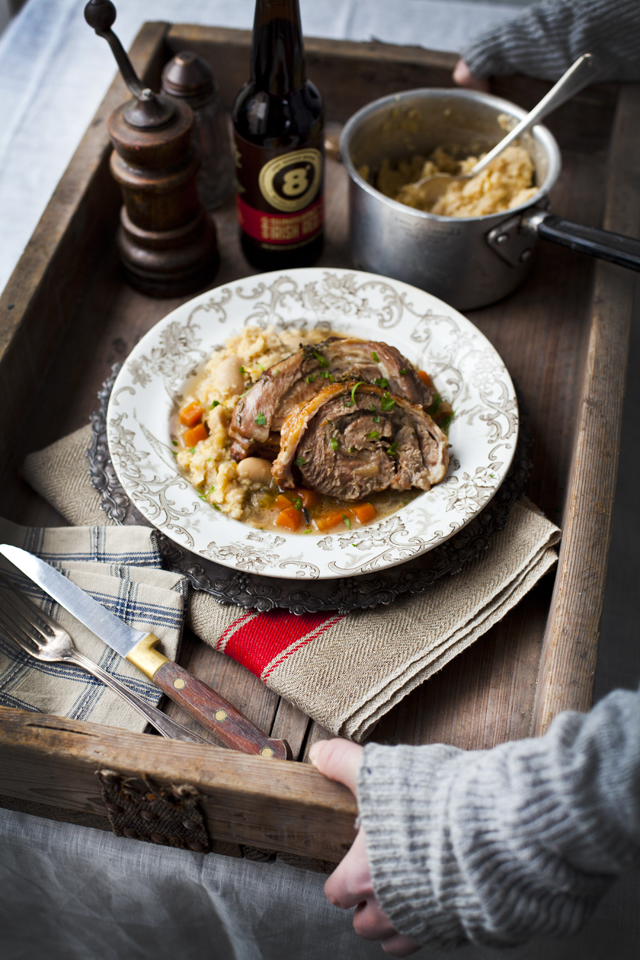
 Serves 6
Serves 6  270 mins
270 mins 3 garlic cloves, roughly chopped
3 thyme sprigs, leaves picked and roughly chopped
3 rosemary sprigs, leaves picked and roughly chopped
Sea salt and ground black pepper
1–2 tbsp olive oil
2kg lamb shoulder, boned and rolled
2 onions, peeled and roughly chopped
2 celery stalks, trimmed and roughly chopped
3 large carrots, peeled and roughly chopped
1 bay leaf
250ml red ale or dark beer
250ml beef or lamb stock
For the butter bean mash:
1 tbsp plain flour
Sea salt and ground black pepper
3 tbsp olive oil
3 garlic cloves, peeled and finely sliced
Grated zest and juice of 1 lemon
1 rosemary sprig
2 x 400g tins of butter beans, drained and rinsed
Small handful flat-leaf parsley, chopped
Pestle and mortar
Small sharp knife
Large casserole with a lid
Slotted spoon
Chopping board
Foil
Large frying
Potato masher

This is my version of an Indian classic; ‘ka kesar’ means ‘with saffron’. From the glorious Nizam Hyderabadi palaces to the Moghul territories of Lucknow, Delhi and Agra across to Kashmir, Lahore and Karachi and back to Persia, biryani has many regional variations. Lamb, hogget, mutton – even goat – are all traditional. The key is undoubtedly the beauty of the basmati rice and a slow, ‘dum’ cooking method. ‘Dum’ refers to cooking in a sealed pot; traditionally the pot is sealed with dough but here we use a tight-fitting lid.
This recipe is taken from Fresh Spice by Arun Kapil, published by Pavilion Books. Recipe photography by Yuki Sugiura.
